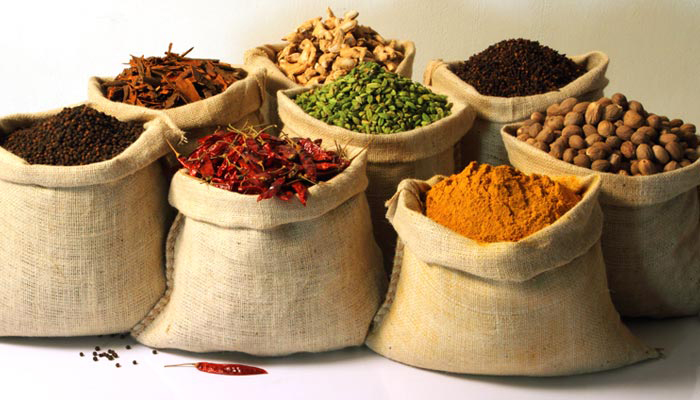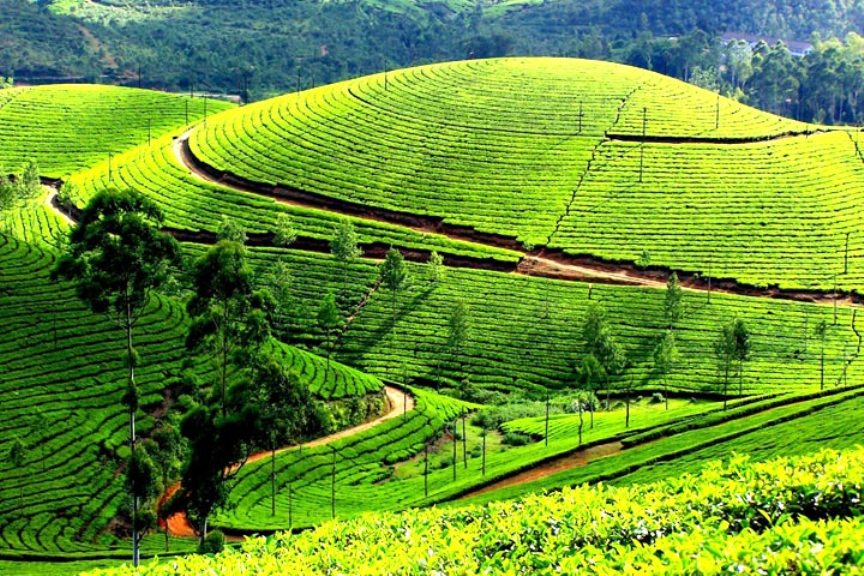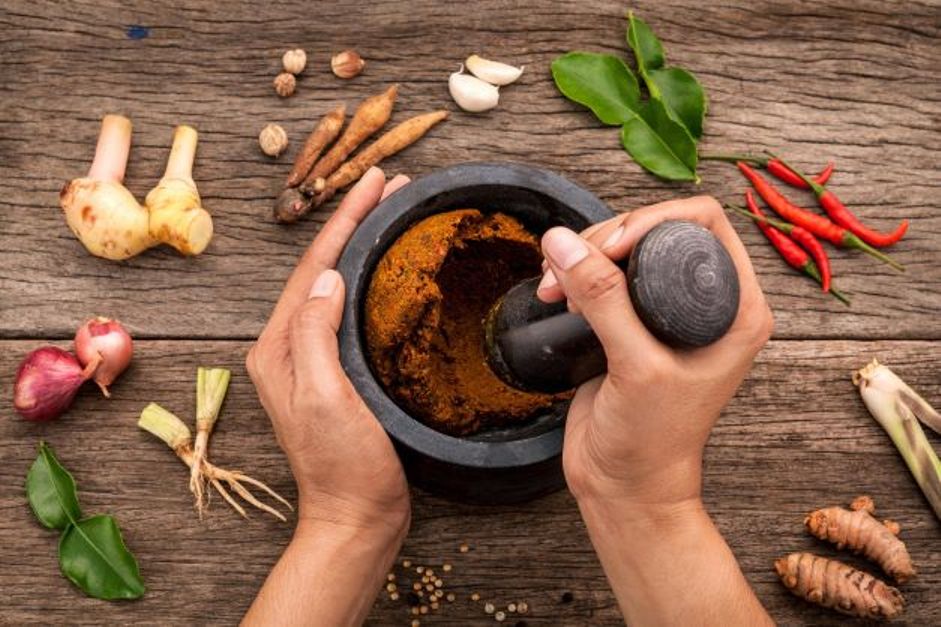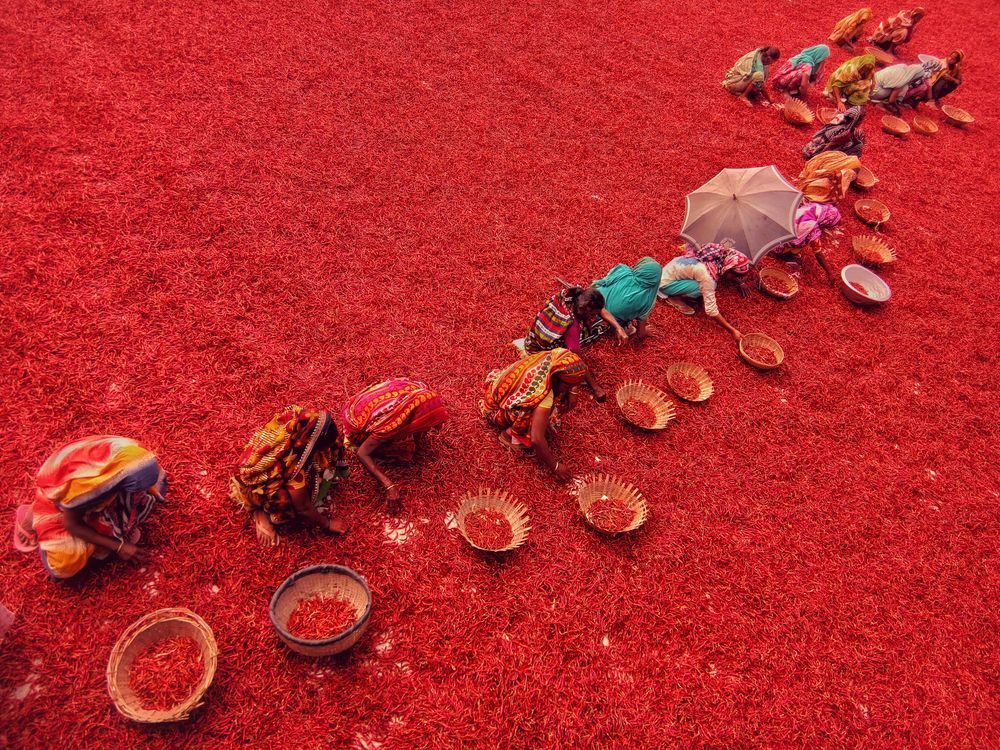

Ayurveda is a traditional Indian system of medicine. It aims to preserve health and wellness by keeping the mind, body, and spirit in balance and preventing disease rather than treating it. To do so, it employs a holistic approach that combines diet, exercise, and lifestyle changes. Ayurvedic herbs and spices are also an important component of this approach. They’re thought to protect your body from disease and offer a variety of health benefits, including improved digestion and mental health.
Spices and herbs such as black pepper, cinnamon, turmeric, and cardamom have been used by Indians for thousands of years for both culinary and health purposes. Spices indigenous to India (such as cardamom and turmeric) were cultivated as early as the 8th century BC in the gardens of Babylon (2).Sushruta, an ancient surgeon (around 4th century BC), used white mustard and other aromatic plants in bed sheets to ward off malignant spirits. He also applied a poultice from sesame to postoperative wounds which may have acted as an antiseptic.Medical writings of Charaka (1st century) and Sushruta II (2nd century) referenced spices and herbs. Sushruta II also used spices and herbs such as cinnamon, cardamom, ginger, turmeric, and pepper for healing purposes. Spices such as cardamom, ginger, black pepper, cumin, and mustard seed were included in ancient herbal medicines for different types of health benefits. In Ayurvedic medicine, spices such as cloves and cardamom were wrapped in betel-nut leaves and chewed after meals to increase the flow of saliva and aid digestion.

Spices were traded throught the ages from Asia to Europe via the famous Silk Route. Silk route proved to be unreliable due to political instabilities - Arabic caliphate was established in 7th century leading to decades of war in the middle east. Few centureis later, there were multiple crusades to the middle east raising political instability. Finally in 13th and 14th century Mongols raided middle east and east europe, and made it impossible to trade spices between europe and asia in quantities required to satisfy European nobility. In the middle ages, black pepper was at times higher than price of gold per unit weight. This motivated 15th and 16th century explorers to find an alternative routes to India in order to secure safe supply of spices. After Vasco da Gama discovered a sea rout to India in 1498, multiple portugese, french and later british and dutch colonies were established on indian coast, in order to harvest and trade spices with europeans.
Spices play an enormous role in the way we cook and consume food in India. Not surprisingly, Indian curries are relished all over the world owing to the rich and spicy flavours. If you enjoy cooking or appreciate a good meal, you’d agree that every spice has its own flavour and essence. However, Indian spices benefits go beyond taste and flavour. Indian spices not only make the food flavourful, but Indian spices health benefits have been studied by researchers across the world with laudable results. For example, golden latte or turmeric milk has taken the world by storm, especially during the ongoing pandemic, as a super immunity booster. Fortunately, in India, we have been having turmeric since childhood, as it is an essential part of Indian cuisine. Indian spices benefits ofcumin seeds, cardamom and cinnamon are also well known around the world.

Adding herbs to your diet can have a remarkable impact on your health. Herbs are nutrient-dense, meaning that they are low in calories and provide nutrients for the body. These strong little plants contain antioxidants, vitamins, minerals, dietary fiber, essential oils, anti-bacterial, and anti-inflammatory properties. When there are grown at "home" in your own fields, you build a relationship with your own herbs and spices. The care and love to the produce is much higher when they are grown with your own hands. More care gives better quality of spices. Planting an herb garden is a wonderful way to enjoy the sights, smells and tastes of a wide variety of plants. Fresh herbs are often easy to cultivate and can grow in a small garden in the back yard, in pots on an outdoor patio or sunroom, or even in a window box inside a kitchen. Gardening is a terrific hobby and allows your senior loved one an opportunity to show his or her creativity. It is a great activity that can be shared with others like grandchildren, with friends in a club as a social activity, or even alone. Not only is gardening relaxing but it also improves hand-eye coordination, motor skills and self-esteem.

Tradional processing methods are used: Sun-drying our growns to keep the valuable minerals intact. Sun drying is a traditional post-harvest practice that includes exposing the crops to the effects of sun and wind. The practice is usually done by spreading the spices on the ground. Besides that, sun drying also includes putting the crops in shade, as well as on raised surfaces. By keeping the spices on an elevated surface, a farmer can ensure better air circulation, and hence improve the drying uniformity. Diversification and sustainable intensification of food production have the potential to improve the availability, affordability, stability and consumption of diverse foods and to promote healthy, nutritional and sustainable diets for all, while simultaneously increasing climate robustness and working with synergy of ecosystem services. Preserving the crops is just as important as growing crops. For this purpose, farmers use various post-harvest practices that protect harvested crops from spoilage and decay. One of these practices is drying.

Freshly grounded to keep the freshness.We never use any preservatives India is rich in bio-diversity, and serving as center for origin of many plant species and livestock. Over the generation, particularly after the green revolution, farming seeding(cropping) pattern has changed and people replaced traditional crops by cash crops and primary importance has given to monoculture, which has caused the imbalance in the ecosystem. Additionally, Many changes observed in the environment are long term, occurring slowly over time and its effects are seen in 30-50 years time. Organic agriculture considers the medium- and long-term effect of agricultural interventions on the agro-ecosystem. We aim to produce food while mainting the ecological balance to prevent soil fertility or pest problems. Organic agriculture takes a proactive approach as opposed to treating problems after they emerge. Organic farmers are both custodians and users of biodiversity at all levels. At the gene level, traditional and adapted seeds and breeds are preferred for their greater resistance to diseases and their resilience to climatic stress. At the species level, diverse combinations of plants and animals optimize nutrient and energy cycling for agricultural production. At the ecosystem level, the maintenance of natural areas within and around organic fields and absence of chemical inputs create suitable habitats for wildlife.

Empowering local women with employment and independence. The agricultural sector has a unique potential for empowering women and providing diverse opportunities. This may not be news to you, but women farmers are held back by multiple barriers that prevent them from feeding their families and improving their livelihoods. Women farmers are not only being held back because they are women, but they also faced the challenges felt by all small scale farmers. For starters, they have less access to land, loans and machinery than men do. They also carry the famous “double-burden” of paid work and unpaid childcare/home labour. Growth in small-scale agriculture is two to four times more effective at reducing hunger and poverty than any other sector, and women farmers are playing a central role. Now it is more important than ever to empower women farmers to ensure resilience to climate change and to end world hunger. Our farms with help of volunteers, offers programs specifically focusing on the plight of young women and destitute women in poverty communities. The program aims to help the women giving them support, guidance, and life skill training. Volunteers work with grassroots woman’s group and teaching English; help to initiate income-generating activities and to create sustainable solutions to the challenges the woman face on a day to day basis.In our program, we assist with training women in diverse life and income-generating skills and to carry out research to find alternative solutions to fight poverty. No specific requirements except willingness and enthusiasm to help women.